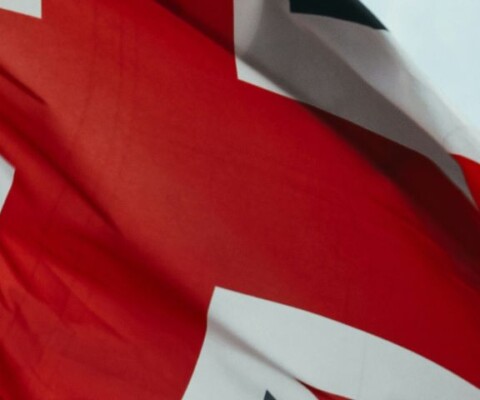Since the UK’s departure from the EU’s single market and customs union in January 2021, businesses have faced a transformed trading environment. Increased paperwork, customs checks, and regulatory changes have reshaped the flow of goods in and out of the country. While most goods still avoid direct tariffs under the UK-EU Trade and Cooperation Agreement, non-tariff barriers have driven changes in trade volumes and costs.
For SMEs, understanding how tariffs work – and how they’ve evolved since Brexit – is essential for staying competitive, controlling costs, and seizing new opportunities. In this article, we’ll break down how UK tariffs have changed post-Brexit and their impact on SMEs, starting with a timeline of key turning points.
Table of contents
- What are the key Brexit tariff milestones?
- How has Brexit changed UK trade?
- What is the UK Global Tariff?
- How are UK tariffs structured for imports and exports?
- What impact do UK tariffs have on SMEs?
- How can businesses stay compliant and manage risk?
- What is the future outlook for UK tariffs?
What are the key Brexit tariff milestones?
Understanding the timeline of Brexit’s key tariff-related events helps set the stage for how UK trade has shifted over the past decade. These milestones explain how political decisions translated into trade realities.
From referendum to exit
- June 23, 2016: UK votes to leave the EU, 52% to 48% (51.89% for Leave, 48.11% to Remain).
- March 29, 2017: UK triggers Article 50, starting the two-year withdrawal process.
- January 31, 2020: UK leaves the EU, entering an 11-month transition period.
- December 24, 2020: UK and EU agree on the Trade and Cooperation Agreement (TCA), securing zero tariffs and quotas on goods that meet rules of origin.
- January 1, 2021: End of transition period; new customs and regulatory controls introduced.
Post-Brexit trade agreements and tariff reforms
The UK Global Tariff (UKGT) was introduced on 1 January 2021, replacing the EU’s Common External Tariff. It simplified tariff lines, eliminated tariffs below 2%, and lowered many rates to reduce costs for UK businesses. Recent years have seen ongoing tariff reviews, adjustments to align with trade agreements, and targeted tariff cuts to support sectors like green technology.
How has Brexit changed UK trade?
The UK’s departure from the EU changed the way goods flow in and out of the country. Businesses had to adjust to a new reality that included extra steps and potential costs for cross-border transactions.
Life inside the EU single market
Before Brexit, trade between the UK and the EU was frictionless, with no tariffs, border checks, or customs paperwork. This allowed goods to move freely, cutting costs and delays for businesses.
The shift to an independent trade policy
Leaving the single market and customs union ended this frictionless trade. The UK now applies its own tariff regime and customs controls, making tariffs relevant again for goods not covered by zero-tariff agreements or those failing to meet rules of origin.
What is the UK Global Tariff?
As mentioned earlier, the UK Global Tariff (UKGT) was introduced on 1 January 2021. The UKGT defines the UK’s independent tariff regime and underpins its trade strategy. Understanding its scope supports any business importing goods into the UK.
The UKGT is:
- Simpler than the EU Common External Tariff.
- Denominated in pounds rather than euros.
- Tailored to UK needs, with reduced or removed tariffs on many goods.
For example, tariffs on certain raw materials and components have been cut to help manufacturers, while protections remain for domestic industries such as agriculture and the automotive industry.
How are UK tariffs structured for imports and exports?
The current tariff framework determines how goods move between the UK, the EU, and the rest of the world. The differences between these trade channels are crucial for compliance and cost planning.
Trade with the EU
Under the TCA, most goods from the EU enter tariff-free if they meet the rules of origin. However, customs checks, declarations, and regulatory compliance still apply.
Trade with non-EU partners
For other countries, the UK applies the UKGT. The UK has signed multiple Free Trade Agreements (FTAs), including with Australia, New Zealand, and, more recently, the US-UK Economic Prosperity Deal of 2025, which reduced tariffs in sectors such as the automotive and steel industries.
What impact do UK tariffs have on SMEs?
For SMEs, tariffs affect pricing, profitability, and competitive advantage. The impact can be challenging, but potentially a good opportunity for businesses.
Challenges and cost pressures
SMEs face higher costs from customs processes, tariffs, and regulatory compliance. Sectors such as the automotive industry have seen additional pressures from US tariffs on UK exports, alongside higher import costs for certain materials.
Opportunities in the new trade landscape
Some SMEs benefit from reshoring production or tapping into new trade agreements. Businesses that adapt supply chains to leverage tariff-free deals can gain competitive advantages.
How can businesses stay compliant and manage risk?
Compliance is central to avoiding delays, fines, or loss of tariff benefits. Clear systems and up-to-date knowledge make it easier for businesses to stay on track.
Using the UK integrated tariff tool
The UK Integrated Tariff tool helps businesses classify goods using commodity codes. This ensures the correct tariffs, taxes, and any restrictions are applied.
Understanding rules of origin
The rules of origin determine if goods qualify for preferential tariffs under agreements like the TCA. Misclassification can lead to penalties, delays, and loss of tariff benefits.
What is the future outlook for UK tariffs?
Looking ahead, the UK is expected to continue adapting its tariff policies to balance economic goals with international relationships. The ability to anticipate changes will be vital for businesses.
The UK aims to continue expanding FTAs and refining the UKGT to balance domestic protection with trade growth. Upcoming agreements, shifts in geopolitical trade policy, and sector-specific reforms will shape tariff policy over the next few years. SMEs that monitor changes and adapt quickly will be best positioned to benefit.
If your business is navigating post-Brexit trade complexities, Privalgo’s currency and payment solutions can help you manage cross-border transactions efficiently and cost-effectively.
Speak to a Privalgo Currency Specialist today to find out how they can help you design and execute a strategy that works for your business.


